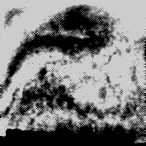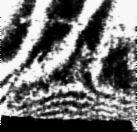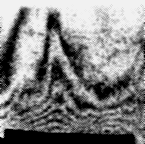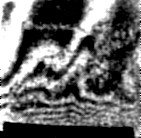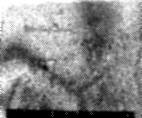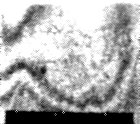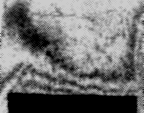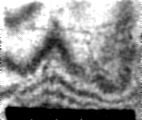Results_and_Discussion5
3.4.2.2 Results and Discussion
During the heat loading of the test specimens heat transmission and gradual degradation of the wood mass occured. The different structure of wood and the composition of wood-based materials caused different destructive deformations of the test specimens surfaces.
For example, in the case of laminated chipboard only deformation of the surface foil without carbonisation of the surface appeared. Burning of the test specimen surface did not happen. The influence of the fire action was manifested only in the places that were in direct contact with the flame, namely by a crack formation in the laminated layer. In the case of chipboard without treatment composed of smaller elements a visible destruction was observed throughout its whole surface and with more important invasion into the test specimen interior.
In the case of plywood the inhomogenity of the raw material was manifested by leafing and warpage of the wood along the fibres caused by the difference between the spring and summer wood and by loss of the wood mass along the layers the veneer was made of. Test specimens of retarded plywood were more compact and represented more compact material than plywood without treatment. The fire did not propagate along with the wood fibres, but locally. Gradually, in the process of heating the retarder migrated upwards onto the surface in the centre of the test specimen that was in direct contact with the flame. The retarder plastically copied the fibres of the surface veneer and its bubbling happened. The retarder around the boundaries only trickled onto the surface. The formation of cracks started after approximately 11 minutes of heating.
During the heating lasting for 15 minutes no changes occured at neither of the materials on the flame opposite surface.
In the interferograms we can observe how the thermal marginal layer was gradually formed above the test specimen. In Fig. 3–65 we can see the holographic interferograms of the temperature field above the heated test specimen of the laminated chipboard and the test specimen of retarded plywood recorded at the environment temperature of 20 °C.
The heat flow propagates through the material of the thickness of 15 mm. In the figures the gradual increase of the thermal marginal layer thickness is seen. In larger distance above the test specimen a chaotic distribution of interference fringes appears and the inhomogenities have stochastic character. The images are characteristic by clear limitation of the individual interference fringes. The increase of the temperature close above the test specimen brings about also the increase of the number of interference fringes.
The temperatures were calculated by the relation (3.72). Considering the average temperatures above the centre of the test specimen we can compare total heating of the individual sorts of the observed test specimens (Fig. 3–66).
From the results we can state that the heating of chipboard-based test specimens is higher than that of plywood material. This fact can be caused by the material structure composition. The chipboard material shows larger homogeneity. Chips are easy inflammable elements with small specific surface. On the contrary, plywood materials have higher heterogeneity on their cross-section. Thus, the heat propagating through the test specimen meets with two boundary alternating areas: the glue and the wood.
|
|
|
10 min. of heating |
15 min. of heating |
|
|
|
10 min. of heating |
15 min. of heating |
The difference between the plywood and retarded plywood heatings is more remarkable than it is in the case of veneer-based specimens. In the case of retarded plywood the marginal retarded veneer probably stopped the immediate heat transmission at the very beginning of heating.
We can state that there is a remarkable difference between the chipboards and plywood heatings. The maximal temperature above the test specimen after 15 minutes of heating in the case of the chip-based test specimens was up to 105 °C while at those veneer-based only 80 °C.
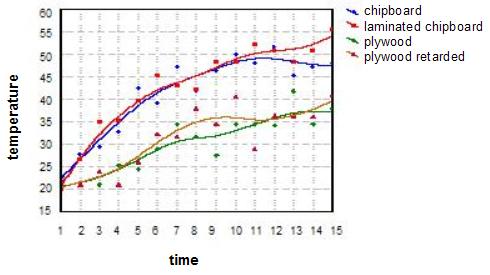
Considering the fact that we investigated the heating at only five test specimens of a sort of material the results obtained are not possible to generalize. They give only a primordial view of wood-based test specimen behaviour during the first 15 minutes of heating.
It would be interesting to observe more specific temperature differences during the heating up to the fire-through of the test specimens in dependence on material characteristics (different thickness of the test specimen, the size of particles, in the case of plywood the number of veneers) would be studied.
The method of holographic interferometry made it possible to display thermal changes of the marginal layer above the test specimen graphically. The visual mapping of the places with different temperatures offers the possibility of prevention from possible danger, for example through detection of the exact places with inbuilt heating to avoid mechanical deformation of the object, enables to determine the risk zone around the heated material so that any ineligible materials in this zone could not be incidently ignited. For the boundary conditions the specific flash-point, the distance or the time interval are considered. The suitable selection of material according to its fire loading characteristics is another important criterion.
